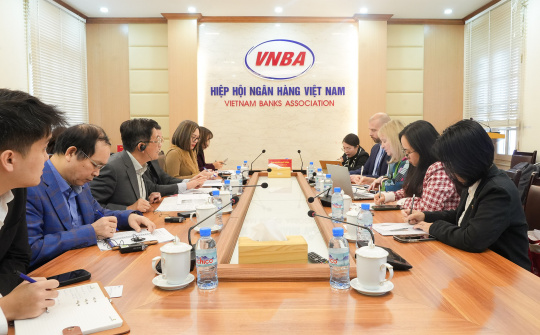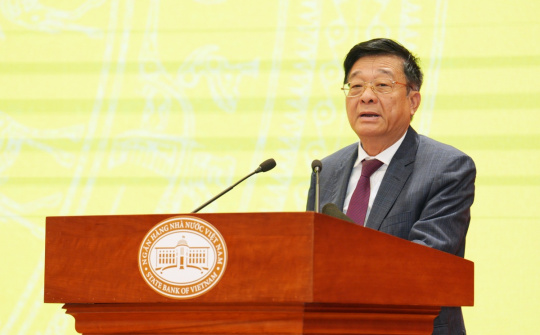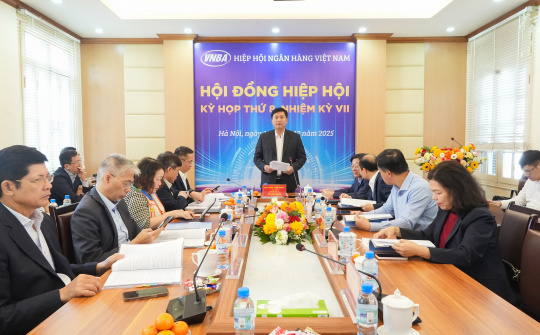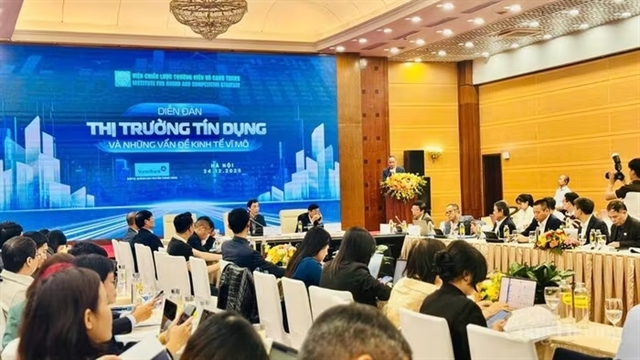
At the meeting, Dr. Sumio Ishikawa - Team Leader and Economist at AMRO raised some issues for mutual discussion: Whether the target of credit growth 15% will be reached this year, what are the key factors to promote credit growth, challenges that may hinder the credit growth target; Forecast or outlook for the non-performing loan (NPL) ratio in 2024; Contents on capital and provisions; What measures are banks taking to ensure that they maintain adequate Capital Adequacy Ratio (CAR) in the context of increasing risks...
In addition, AMRO also asked questions related to liquidity and liquidity conditions of commercial banks, including the loan-to-deposit ratio (LDR) and liquidity coverage ratio (LCR), in the last months of 2024; Banking regulations and supervision; The Law on Credit Institutions 2024 will take effect in 2024, the expected challenges in implementing new bank ownership limits; Predictions on how the implementation of credit limits for individuals and groups of borrowers will impact lending activities; How changes in ownership regulations may affect foreign investment and strategic partnerships in the banking industry; What measures is the State Bank applying or planning to apply to strictly control credit in areas with potential risks, especially the real estate sector, etc.
Speaking with the AMRO delegation, Mr. Nguyen Thanh Son, Director of the Training Center (VNBA), shared: Regarding the Credit Growth Forecast: Based on the economic growth target of about 6-6.5% and inflation of about 4-4.5% set by the National Assembly and the Government, in 2024, the SBV targets a credit growth rate of about 15%, with adjustments appropriate to developments and actual situations. Accordingly, credit management solutions are proactively and flexibly managed, in accordance with macroeconomic developments and inflation, meeting capital needs for the economy. In order to create favorable conditions for credit institutions to provide credit capital for the economy, on December 31, 2023, the SBV assigned all credit growth targets for 2024 to credit institutions and publicly announced the principles for determining credit growth so that credit institutions can proactively implement credit growth.

Mr. Nguyen Thanh Son - Director of VNBA Training
As of August 26, 2024, the total outstanding credit balance of the entire economy reached VND 14.47 million billion, equivalent to a growth rate of 6.63% compared to the end of 2023 and higher than the same period, reaching only 5.15%.
Although the economy is on the recovery trend, there are still many challenges, so credit demand is unlikely to have a major breakthrough; some manufacturing and service industries serving domestic demand are still facing many difficulties, many businesses are downsizing or ceasing production due to lack of orders. In addition, many businesses are dissolving, closing down, the financial health of businesses is declining; the trend of tightening and cutting spending by people... leads to credit institutions having difficulty in increasing credit. In addition, the recent storm No. 3 (Yagi) has greatly affected the socio-economic situation in the Northern region. Therefore, achieving the credit growth target of 15% is a big challenge for the banking industry.
According to Mr. Son, the main factors driving credit growth in the last months of the year are the high demand for credit capital for the import-export sector due to the resumption of export demand; the Law on Real Estate Business, the Law on Housing, and the Law on Land, which took effect early, strengthened confidence in the real estate market, the market gradually "warmed up", and people's demand for home loans also improved, contributing to the credit growth rate.
In addition, some challenges from outside that could hinder the achievement of the 15% credit growth target include the risk of a recession in the US economy, the demand for the Chinese economy has not yet recovered; the impact of Typhoon Yagi on people and businesses, causing disruptions in production and business.

Dr. Sumio Ishikawa - Team Leader and the Economist in AMRO
To ensure sustainable credit growth, the SBV needs to continue to closely monitor the market situation, adjust monetary policy flexibly, and coordinate closely with other management agencies.
Faced with the increasing trend of non performing loans (NPLs), Resolution 42/2017/QH14 expired, credit institutions have been very active and proactive in implementing measures to handle NPLs, control and limit new bad debt, strengthen credit activities and implement policies to restructure debt repayment terms and maintain debt groups to support customers in difficulty. However, the process of handling bad debt of credit institutions still faces many obstacles, coming from many factors such as: Customers encounter difficulties, are unable to repay bank loans; Customers are slow to pay debts, do not cooperate in handling collateral assets; Prolonged litigation and enforcement processes and procedures cause costs, reduce the value of collateral assets... In addition, legal obstacles are one of the main reasons leading to low efficiency in handling bad debt, limiting the progress and effectiveness of handling bad debt in the banking sector.
Regarding capital and reserves, to ensure the minimum capital adequacy ratio (CAR), banks take measures such as: Ensuring adequate capital under normal operating conditions and under stress conditions (Stress Test). Banks take measures to increase capital; Comply with risk management principles for asset portfolios, control asset quality, credit quality; Control capital adequacy ratio, ensure capital buffer level according to Basel standards, Aim to apply Basel III standards to ensure capital buffer level and capital adequacy ratio; Apply internal rating method (Internal Ratings Based-IRB) to proactively manage and control risky assets.
Regarding liquidity, the main factors affecting banks' capital sources include: Monetary policy; Economic growth; Market interest rates; Business environment. Mr. Son commented that the capital sources of banks in the late 2024 and 2025 will continue to be stable and ensure capital supply for the economy.
Sharing at the meeting, Mr. Son said that in the context of the bad debt ratio (NPL) of banks is on the rise, strengthening supervision is an urgent requirement to ensure the stability of the banking system and protect the rights of depositors. Some recommendations for this content, according to Mr. Son, are to improve the quality and frequency of supervision; Complete the legal and regulatory framework; Strengthen the capacity of the supervisory agency.
Expected challenges in implementing new bank ownership limits when the Law on Credit Institutions 2024 comes into effect have introduced new regulations on bank ownership limits, aiming to strengthen management, supervision and ensure the stability of the banking system, improve the health of the market and help banks better control risks. However, the implementation of these regulations will face a number of challenges as follows: Accurately identifying the relationships between shareholders and related parties is a complex task, requiring thoroughness and high expertise. In particular, in large corporations, relationships can be very diverse and complex; Developing and applying assessment criteria in a unified and objective manner to determine relationships is a major challenge; Relationships can change continuously over time, requiring management agencies to regularly update information and make adjustments.
Potential impacts of the new bank ownership limit on the structure of the banking industry: Increasing transparency and corporate governance; Promoting fair competition; Strengthening system stability; Changing ownership structure... The implementation of the new regulations will be a complex process, requiring careful preparation by banks.
To strictly control credit in areas with potential risks, especially real estate, the State Bank of Vietnam controls real estate credit based on the orientation for commercial banks (CBs), directing the credit flow of CBs to real estate areas that the market is still lacking such as social housing, housing for low-income people, renovation of old apartments... according to the 120,000 billion package.
At the end of the meeting, Dr. Sumio Ishikawa expressed his gratitude for the useful information exchanges and sharing from the representatives of the Vietnam Banking Association, and hoped to continue receiving active consultation and support from the Vietnam Banking Association so that AMRO could better understand the operations of financial and credit institutions in Vietnam in the coming time.
VNBA News




















